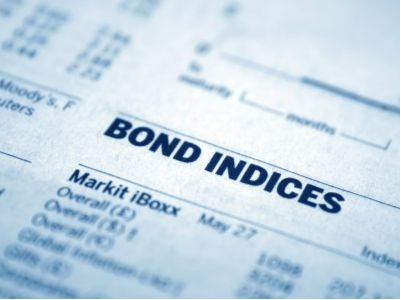Ba Ling: Non-investment grade bonds and loans both offer attractive investment opportunities.
2024-11-04 16:38
Looking ahead to the future, Ba Ling Fund continues to believe that from the remaining time of 2024 to 2025, non-investment grade bonds will continue to receive significant bullish support.
Recently, the Balin Fund stated that the fundamentals of the non-investment grade market are favorable and the technical aspects are stable, and that bonds and loans can provide many attractive income opportunities. The investment thesis remains convincing. Given the strong fundamentals, the Balin Fund believes that there are many advantages to strategically allocating to non-investment grade bonds and loans. In particular, while some investors may try to time their entry, the institution believes that this investment approach may miss out on the attractive risk-adjusted returns that come from holding non-investment grade bonds over the long term.
The Balin Fund stated that the overall economic environment is mixed, but in such an environment, the non-investment grade market continues to perform steadily. In terms of confidence, concerns about the recent US economy potentially entering a recession seem premature. Following the Fed's rate cut in September, the market began digesting the possibility of rapid and significant rate cuts in the rest of this year and 2025. Currently, the recent job data in the US is strong, along with robust housing demand and retail sales, suggesting that the economic performance seems stronger than expected, and the Fed may not need to take aggressive action. Overall, a fairly positive economic situation is a positive factor for non-investment grade issuers.
On the concern side, Balin is worried about the escalating geopolitical risks. With conflicts intensifying in the Middle East, the ongoing Russia-Ukraine war, and the unpredictable outcome of the US presidential election, risk sentiment is on the rise. Although the market is unlikely to fully digest potential geopolitical tail risks, Balin remains cautious about potential market volatility triggered by any of these circumstances. Additionally, the overall economic environment in Europe seems weaker than the US, with expectations for the ECB to further ease monetary policy to counter slowing economic growth. However, even in the face of lower to moderate economic contraction in Europe, it is unlikely to have a significant impact on the outlook for most European non-investment grade issuers. Furthermore, given the solid fundamentals and good technical aspects of the non-investment grade market, it can provide a good balance.
The Balin Fund mentioned that the overall financial condition of non-investment grade issuers remains strong, with stable corporate earnings in line with market expectations. While earnings vary across industries, the changing interest rate environment is expected to provide some cushion for issuers, especially for industries with stronger cyclicality such as the automotive sector. Additionally, in the years following the outbreak of the COVID-19 pandemic, many issuers have taken measures to strengthen their financial positions. The net leverage ratio in the US remains at a low level of 3.5 times, with interest coverage ratio at 4.3 times. Despite slower economic growth in Europe compared to the US, the fundamentals are similar, with a net leverage ratio of 3.2 times and an interest coverage ratio of 4.6 times.
From a technical perspective, the strong forces that have dominated the non-investment grade market since 2024 have even strengthened in recent months. In short, the demand for non-investment grade bonds and loans far exceeds supply in the market. The insufficient supply in the market is mainly due to subdued merger and acquisition activity; although lower interest rates are expected to eventually stimulate M&A activity, it may take some time, providing a favorable technical outlook for the market in the coming months. Another reason is the limited number of new bonds being issued by public companies, as most have already refinanced their debt when interest rates were at record lows. In terms of bonds, as the overall credit quality of the non-investment grade market improves, many issuers have been upgraded to investment grade, leading to a shrinking market size for non-investment grade issuers, further tightening the supply. In a limited supply situation, the attractive potential returns still serve as a strong bullish factor for the market.
Furthermore, the Balin Fund still sees value in loans, with further confidence bolstered by the strong recent economic data in the US. In the current environment of relatively high interest rates, loans still offer substantial total return potential. Specifically, the average global loan yield is currently at 8.6%, higher than its long-term average, serving as a key driver of demand. Another advantage of loans is that, unlike other fixed income assets, most of the total return comes from the current interest payments, without having to wait for price appreciation. Benefiting from this income, loans offer a more stable long-term return.
Looking at the overall loan market, the Balin Fund continues to identify investment value in distressed opportunities, such as Loan Management Entity (LME) transactions. These transactions provide a method for issuers to restructure existing debt arrangements, which have become increasingly common and can be used by companies in distress. While such transactions require careful handling, for fund managers with sufficient resources and the ability to analyze related risks rigorously, they can offer attractive value.
In the mid-term, the bond market is also supported by bullish factors. In particular, the overall outlook for total bond returns remains attractive, with the worst yield for BB and B rated bonds around 5.5% and 6.9% respectively. Against a backdrop of strong fundamentals and steady economic growth in the US, opportunities for selective investing are identified in industries facing earnings decline such as chemicals, healthcare, and technology, offering companies with higher leverage, lower prices, and wider credit spreads. While the timing of individual credit improvements is uncertain, many issuers have good liquidity and should be able to repay their debts, ultimately benefiting from central bank rate cuts. However, given the uncertainties in this ever-changing market, a cautious strategy is necessary to identify potential winners and losers.
Looking ahead, the Balin Fund continues to believe that non-investment grade bonds will continue to be supported by significant bullish factors until the end of 2024 and into 2025. However, in terms of the overall asset category, the best relative value opportunities are expected to change at any time. Therefore, fund managers need to be flexible and able to switch between regions and asset categories when opportunities arise.
RECOMMEND

AMAC: In January, 137 new asset-backed special plans were filed, with a total scale of 1122.64 billion yuan.
26/02/2025

Schroder Investment: Investors should consider allocating funds to securitized credit and insurance-linked securities.
26/02/2025

Reuss County Asset Annual Reflection: Policy Tipping Point is very clear. The semiconductor industry in 2025 is a game for the brave.
26/02/2025


